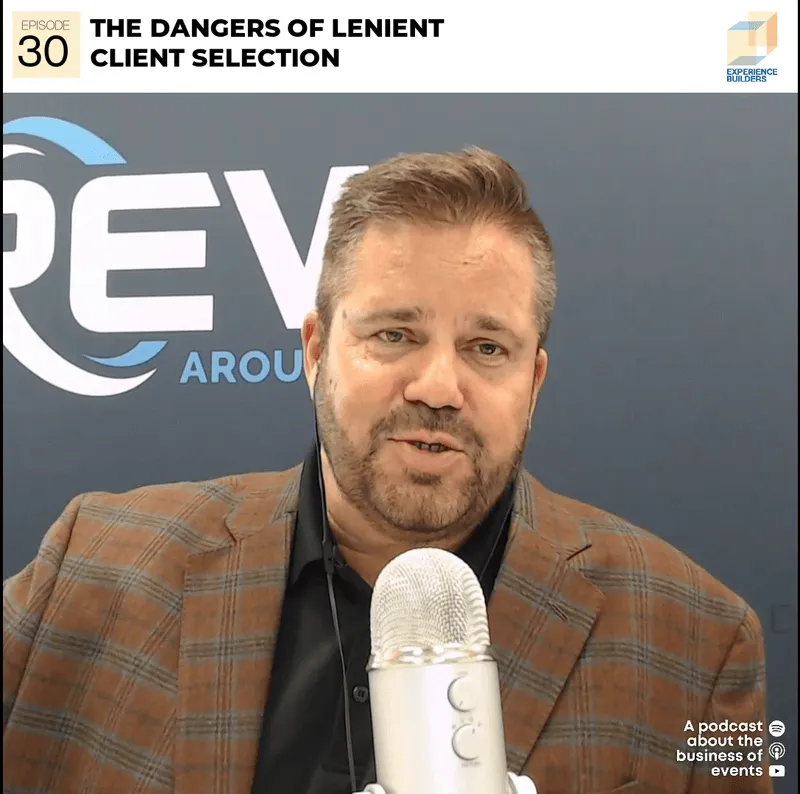Hello, class, it’s good to be back with another lesson. It was great to meet some of you at EXHIBITOR2010 in person. I went to Vegas straight from a seminar tour I was presenting in India, and when I finally made it back to Miami, I hadn’t been in my office for almost three weeks. As you can imagine, there were a million things to catch up on, but the first thing I did was follow up with new prospective clients I met at the show. That brings me to this month’s topic: Post-Show Activities. The last two issues we talked about pre-show and at-show tasks and now we have almost reached the point where we can evaluate how we did and figure out if all our efforts were worth it. But before we get to that, the critical task of turning leads into sales has to be completed. As with anything else around tradeshows, there is ample opportunity to do things wrong and you should have a well thought out plan for your post show activities.
One way of doing things wrong is doing nothing. It’s hard to believe how common that is; companies spend all that effort and money to prepare and execute a show and to collect leads only to ignore them afterwards.
CEIR, the Center for Exhibition Industry Research, estimates that a whopping 80 percent of tradeshow leads are not followed through. Imagine all the activity on a tradeshow floor – and only every fifth lead is worked on afterwards. Reasons are plentiful, but there are no excuses. The most common problem is that booth staff, especially members of the sales staff come back to a pile of voice mail and email to catch up on, deal with clients that had issues come up during the show and deal with all sorts of things that came up while they were out of the office. In the meantime, all those hot leads are cooling down so much that you could probably use them instead of ice cubes to cool your soda. A frequent misbelief is attendees who found you at the show will find you again and contact you after the show.
Never forget that a big percentage of people will go the path of least resistance and often end up doing business with a company that makes it easy to do business with, like one that calls them up after a show to discuss next steps and an order.
So, what is the right way to follow up? There is no one size fits all answer, since a follow-up process depends a lot on your industry, the kind of clients you are looking for and what resources you have available.
But most of the rules apply to anyone:
• Have a defined follow up process. Sounds obvious but way too many companies don’t have a process in place. Not having a process means leaving follow up to chance, something you simply can’t afford after all the time and money invested in your show.
• Score or rank leads based on defined criteria, such as interest level, expected time of purchase and deal value. Make sure the right sales person gets those leads without delay.
• Ensure all leads are followed up with no later than seven to 10 days after the show. The goal should be three to five days after the end of the show, though.
• Consider e-mail or even snail-mail follow up before the sales department contacts the lead by phone. A personalized e-mail with any requested marketing material attached is a good way to keep the lead warm until the sales team can follow up by phone. There are a variety of tools that can make such a follow-up system an easy process. You can buy special software or use features of software you probably already have. Microsoft Word, for example, has an easy to use mail merge feature that allows you to create and send personalized e-mails from a list. Similar options exist for traditional mail. Several companies such as www.sendoutcards.com allow you to make quick, personalized mailings. And, of course, if the business size justifies the effort, personal, hand-written post cards always stand out.
• Define a process to keep track of the progress of leads. Chances are your company already has a lead tracking system in place, but make sure the leads can be easily traced back to the tradeshow and a report can be generated which will be extremely helpful when you create your post-show report and calculate the return on investment (ROI) of the event.
This brings us quite nicely to the second big post-show task, the post-show report. A complete ROI calculation is only possible once all leads have been worked to conclusion, meaning they either ended up in closed business or became dormant. So, it might well be six or possibly even 12 months before a final report can be done. As a general rule, it is a good idea to look at ROI progress and do the calculations one month, three months and six months after the show. Unless you are in a business with extremely long sales cycles, you should have a pretty good idea if the show was worth it three months after the event. In addition to the ROI math, you should also be able to answer a couple of other questions in your post-show report.
The list below is just a guideline and inevitably will need to be adjusted for your specific needs:
• What worked well and what didn’t work well? Consider areas such as booth layout, booth location, staffing, logistics, processes, etc.
• Did you get the type of attendees you were looking for? If not, why was that?
• Did you get the quantity of key prospects/attendees you were expecting?
• Were there marketing opportunities you discovered you weren’t aware of before the show and should consider for the next event?
• Are there any marketing activities you did that didn’t work out as expected?
• Did you receive any feedback from attendees about your booth, your company or your products? What kind of feedback?
• What competitors were at the same event and how did your show efforts/success compare to theirs?
• Any areas where you could cut costs?
• Any areas where you should have invested more?
That’s it for this lesson. Thank you for your time. Bye, for now.
Homework:
Create a post-show ROI Report. Contact TradeShow Teacher for a free post-show reporting template and spreadsheet.
About Linda Musgrove
Linda Musgrove is president of the tradeshow training firm, TradeShow Teacher. She focuses on teaching companies to significantly improve tradeshow results through strategic, customized tradeshow training for individuals, departments or entire teams. Musgrove also presents customized training programs for tradeshow producers to offer exhibitors. Most recently she authored “The Complete Idiots Guide to Trade Shows”, published by Alpha Books/Penguin Publishing. Learn more at /www.tsteacher.com and sign up for the free monthly Trade Show Tactics newsletter. Follow her on Twitter at: twitter.com/tsteacher or send an invite to connect on LinkedIn via e-mail is: linda@tsteacher.com.































